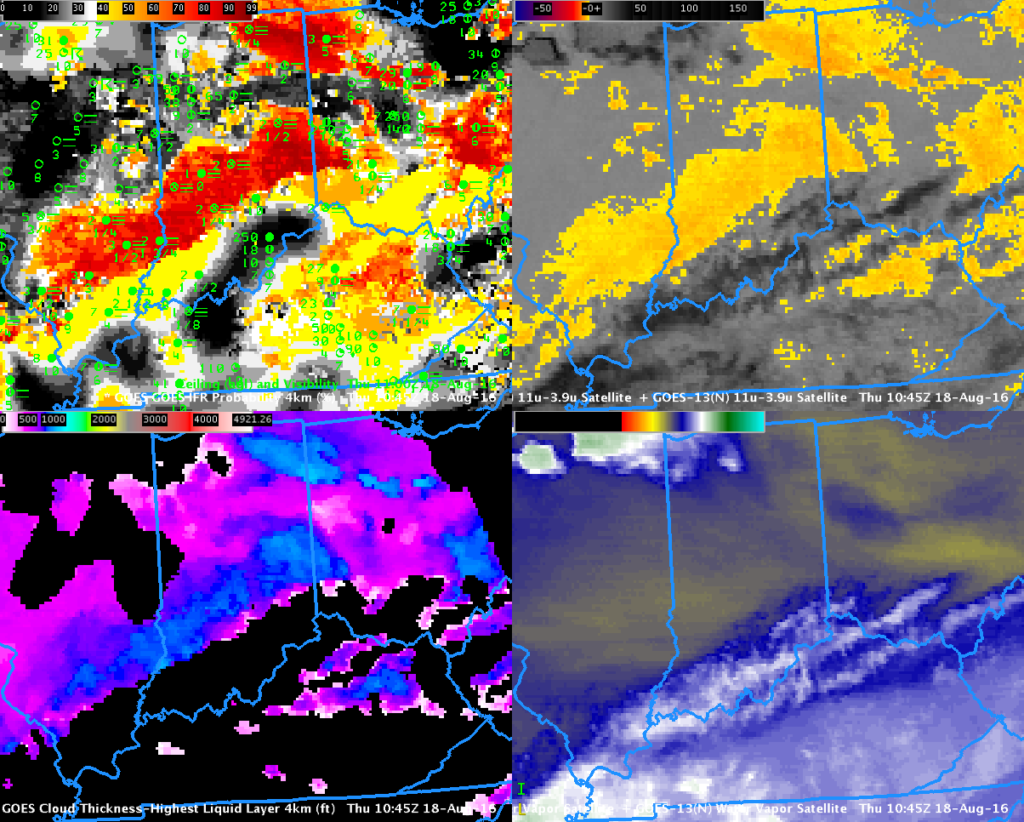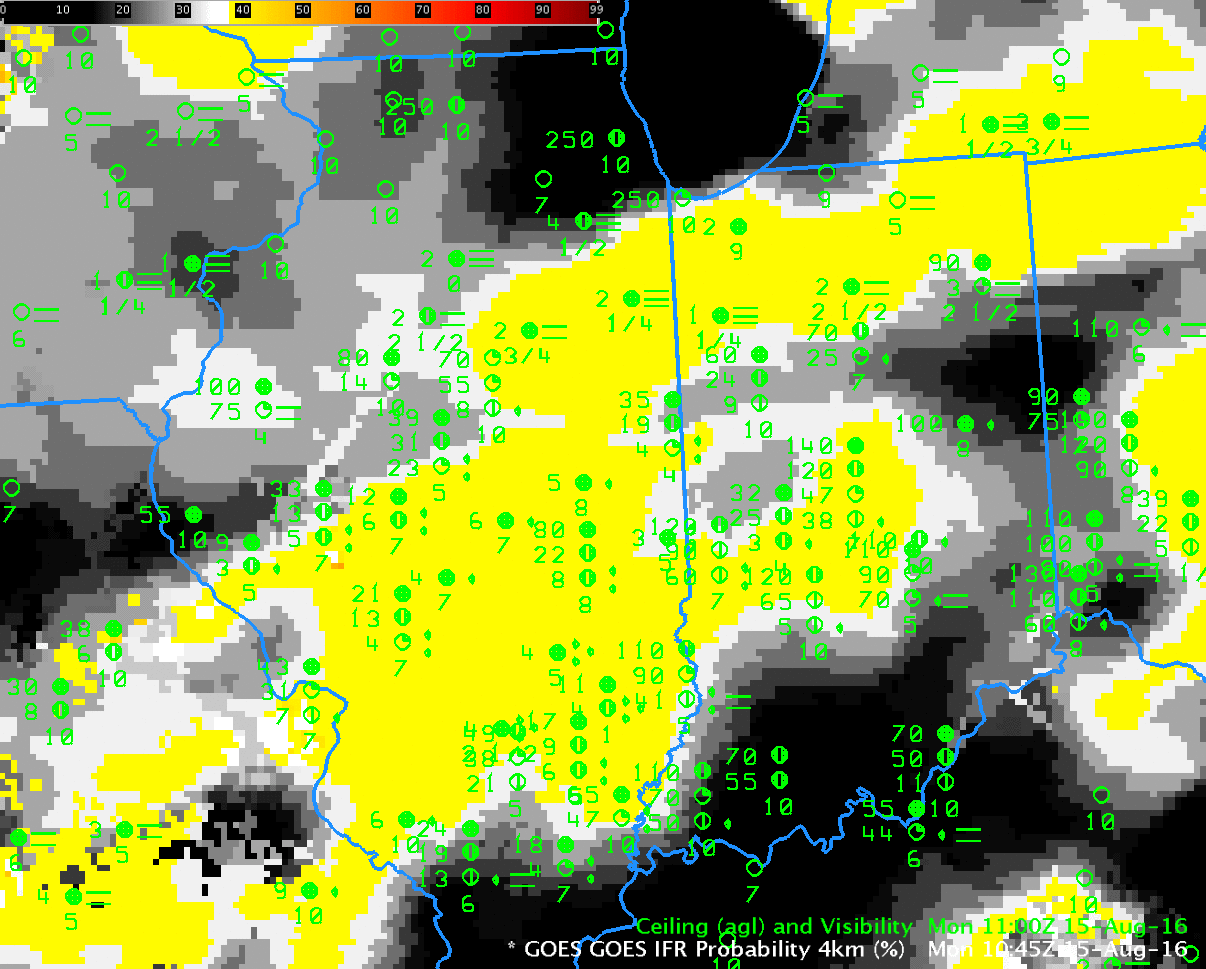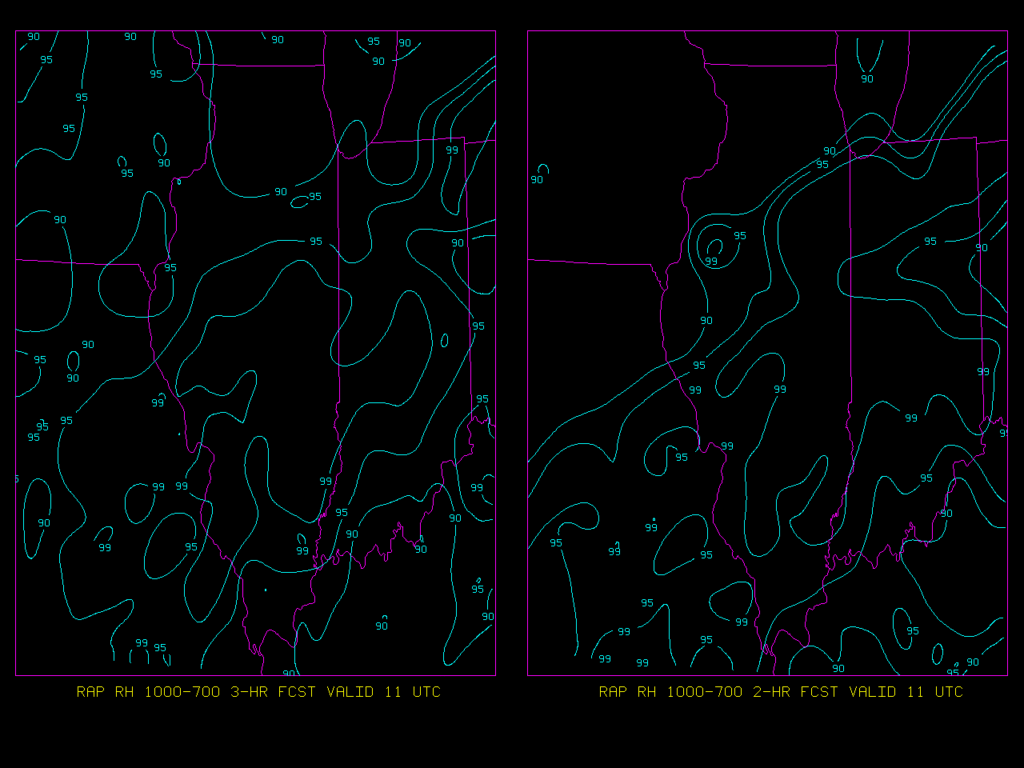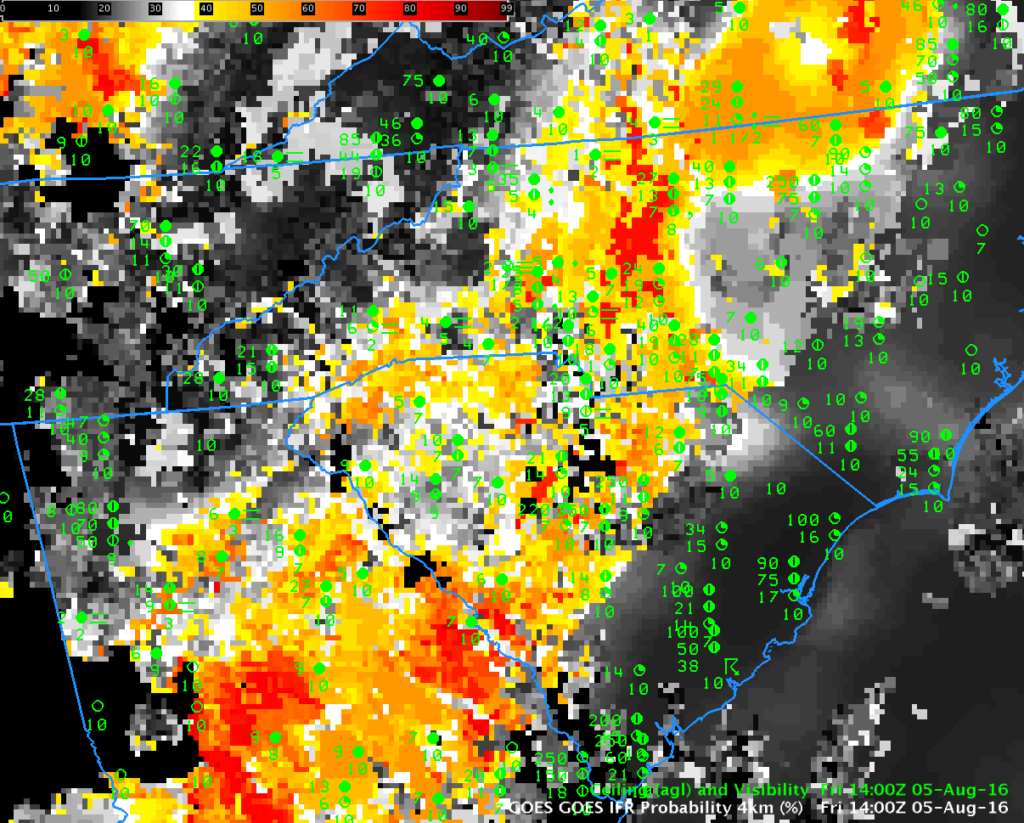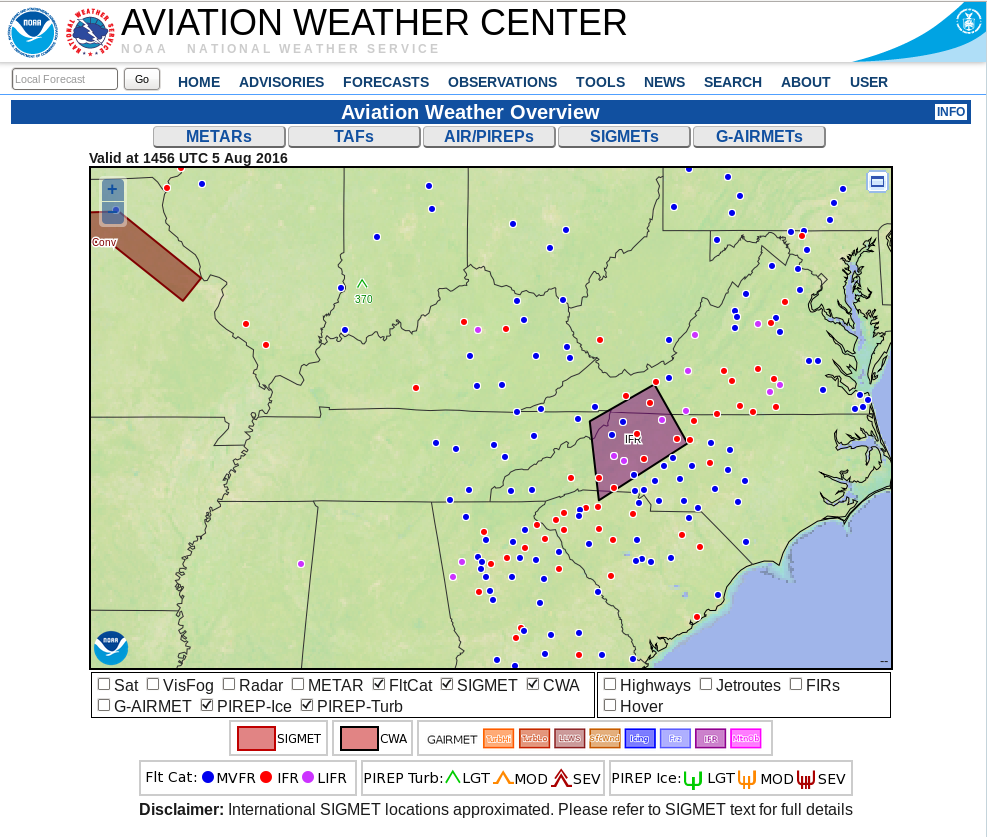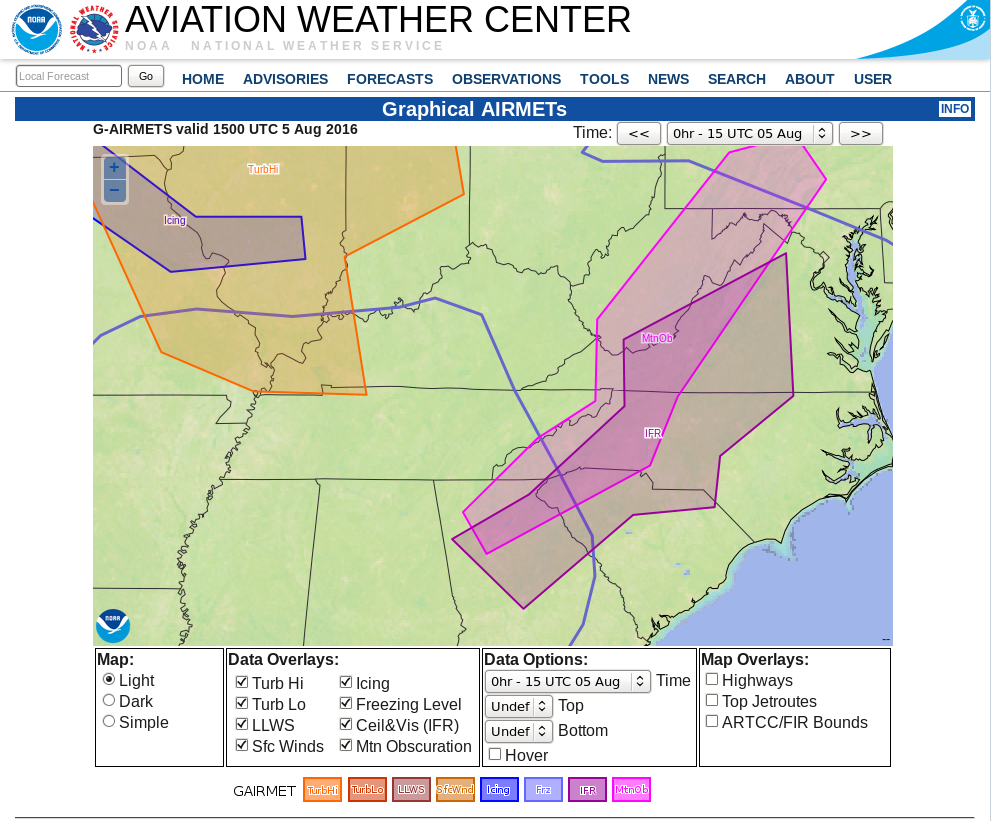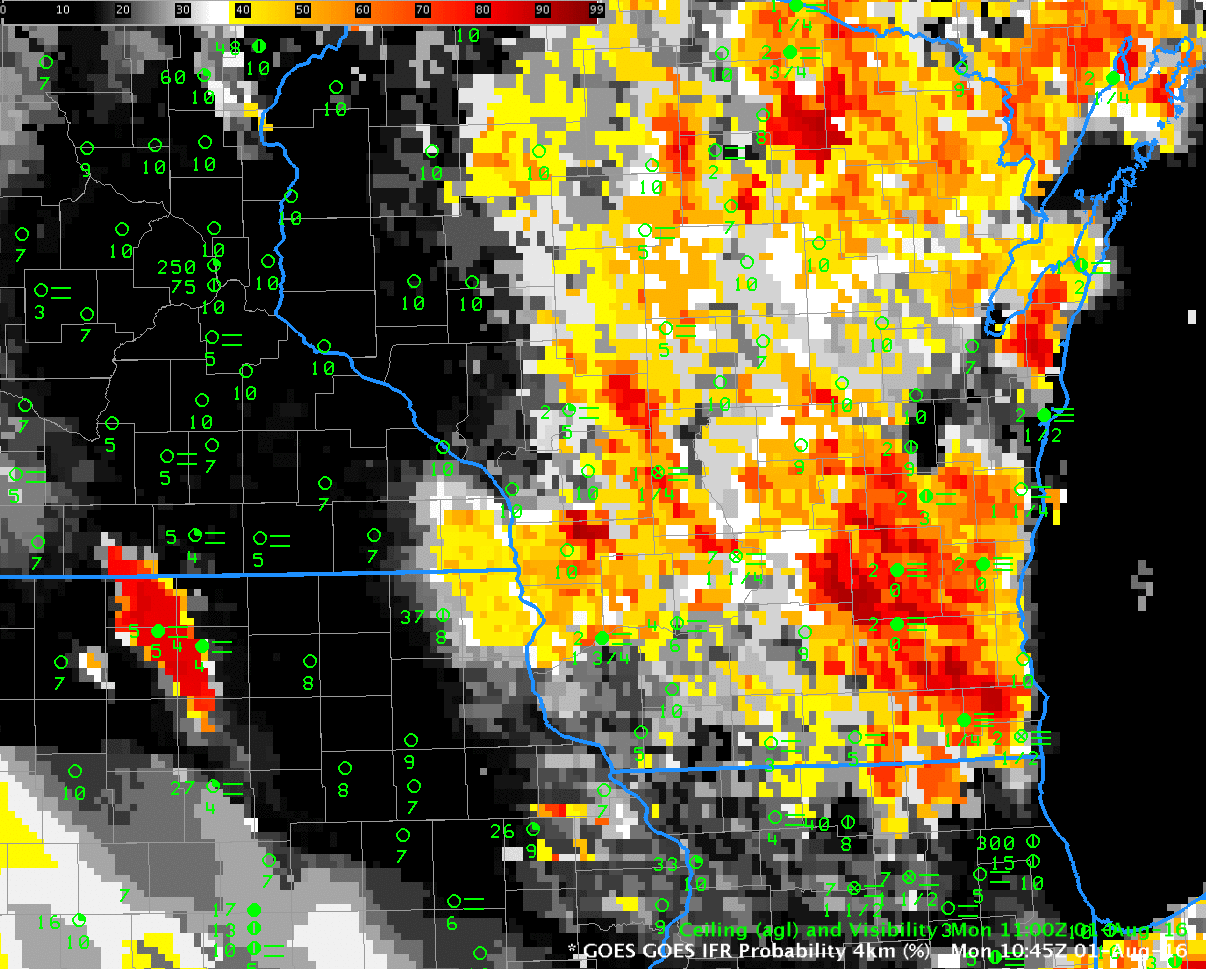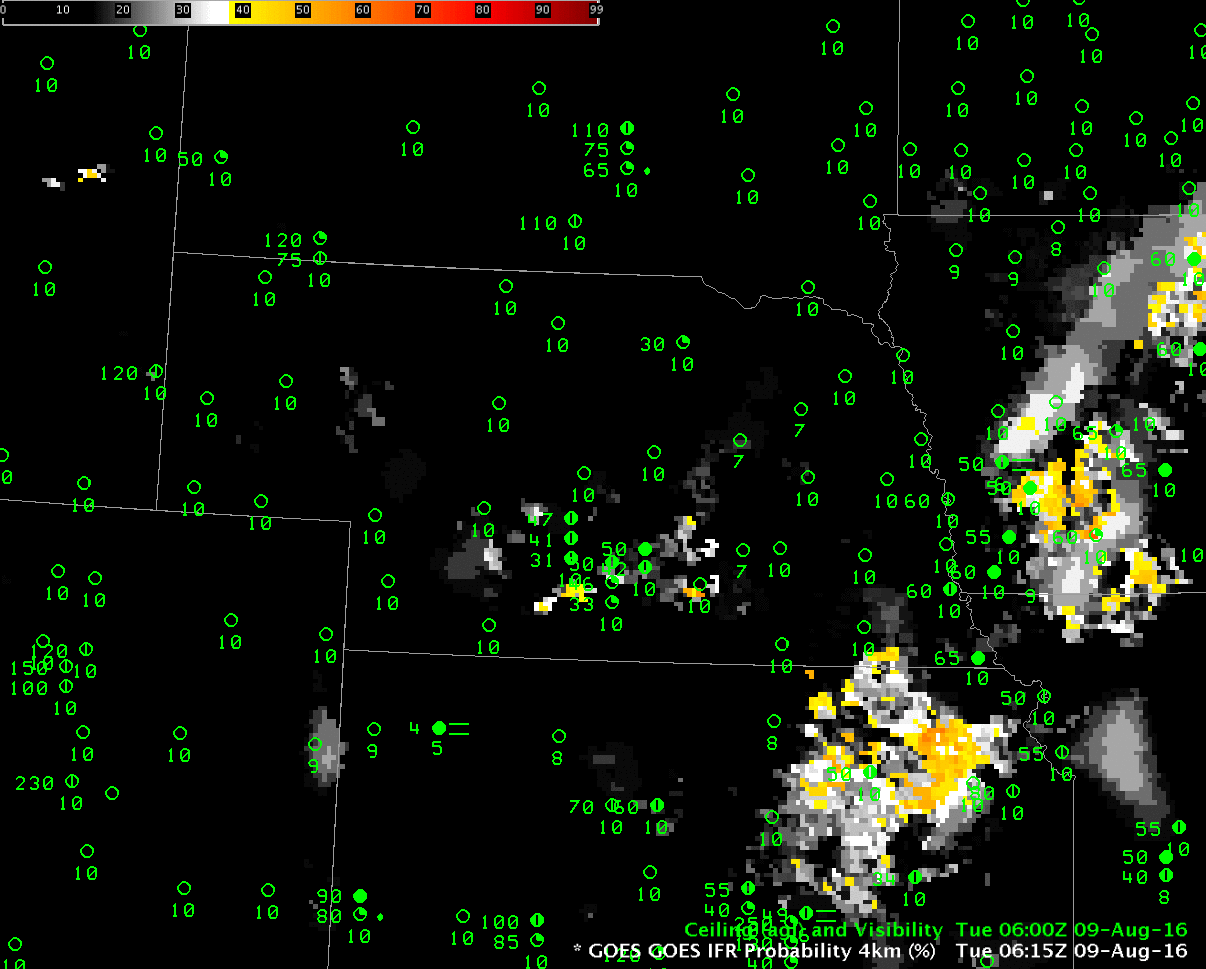
GOES-R IFR Probability, hourly from 0600 through 1400 UTC on 9 August 2016 [Click to enlarge]
GOES-R IFR Probabilities show the development of IFR-producing stratus and fog over central and western Nebraska between midnight and dawn on 9 August 2016. The character of the field suggests that satellite data and Rapid Refresh Model output are both contributing to IFR Probability fields; IFR Probability fields will look far flatter in appearance (just one color) when model fields only are used.
When the Sun rises, the predictors that are used to compute IFR Probabilities change, and that change is evident in the 1245 UTC image below. Night-time predictors are being used to the west of the obvious boundary through central Nebraska, and day-time predictors are being used to the east. It’s more common for IFR Probability values to increase when Day-Time predictors are used, but on 9 August values decreased. (You can see from the animation above that the IFR Probability values subsequently rebounded)
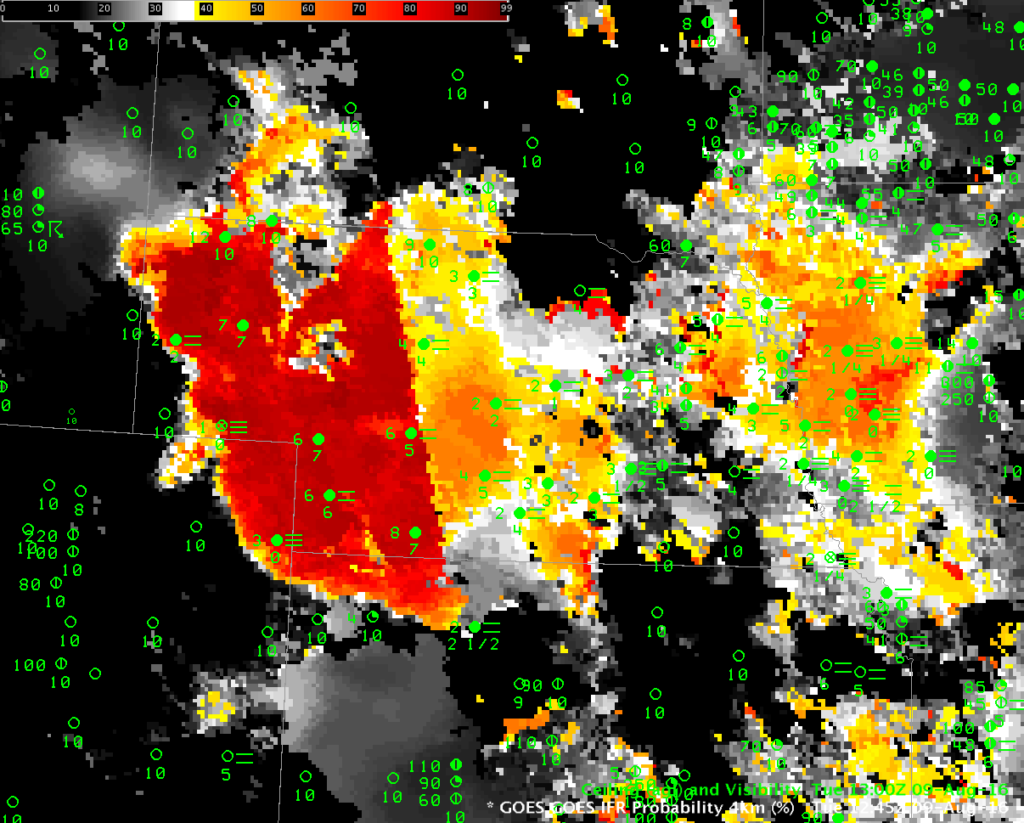
GOES-R IFR Probability at 1245 UTC on 9 August 2016 [Click to enlarge]
GOES-R Cloud Thickness can be used to estimate when fog/low stratus will dissipate (using this
scatterplot). The image below shows the last Cloud Thickness before twilight conditions (during twilight conditions, GOES-R Cloud Thickness is not computed — over Nebraska at this time of year, that’s generally about 2 hours starting around 1145 UTC). The largest values are around 1280 feet, which corresponds to a dissipation time of more than four hours, meaning the fog/low clouds should persist to at least 1530 UTC!
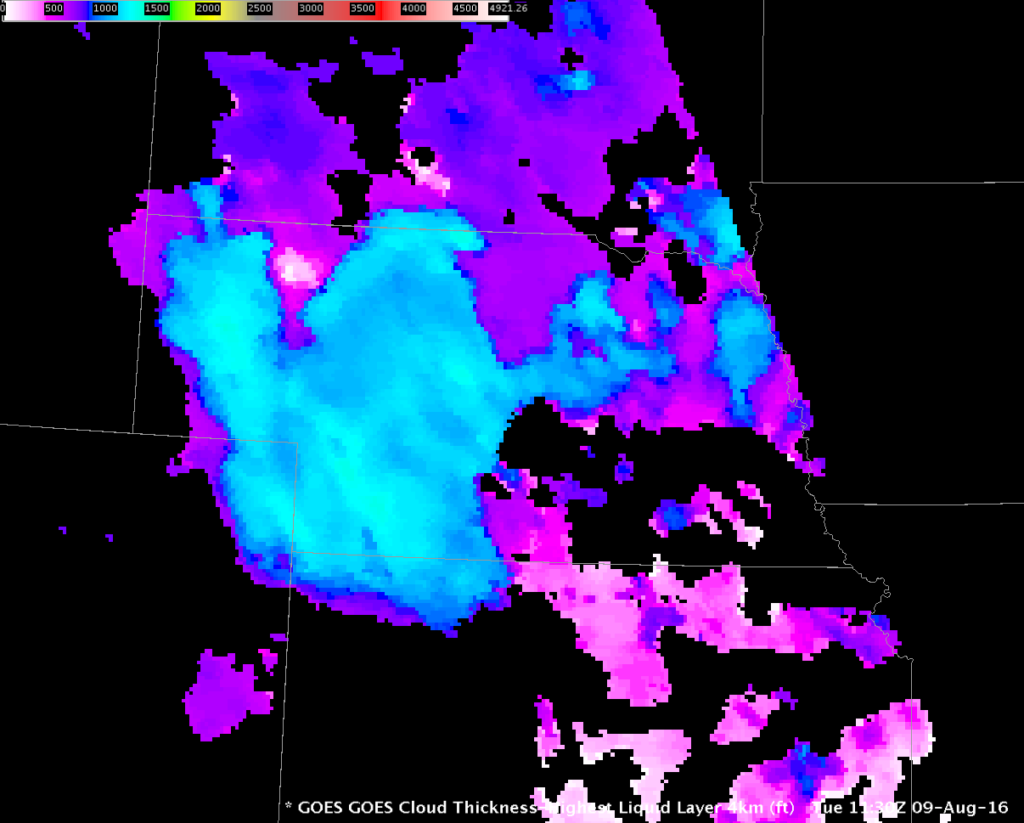
GOES-R Cloud Thickness just before Twilight Conditions over Nebraska, 1130 UTC on 9 August [Click to enlarge]
GOES-14 was observing Nebraska at 1-minute intervals on 9 August, as part of GOES-14’s SRSO-R. The animation from dawn (~1204) through 1610 UTC is below. Fog Dissipation is mostly complete by 1600 UTC.
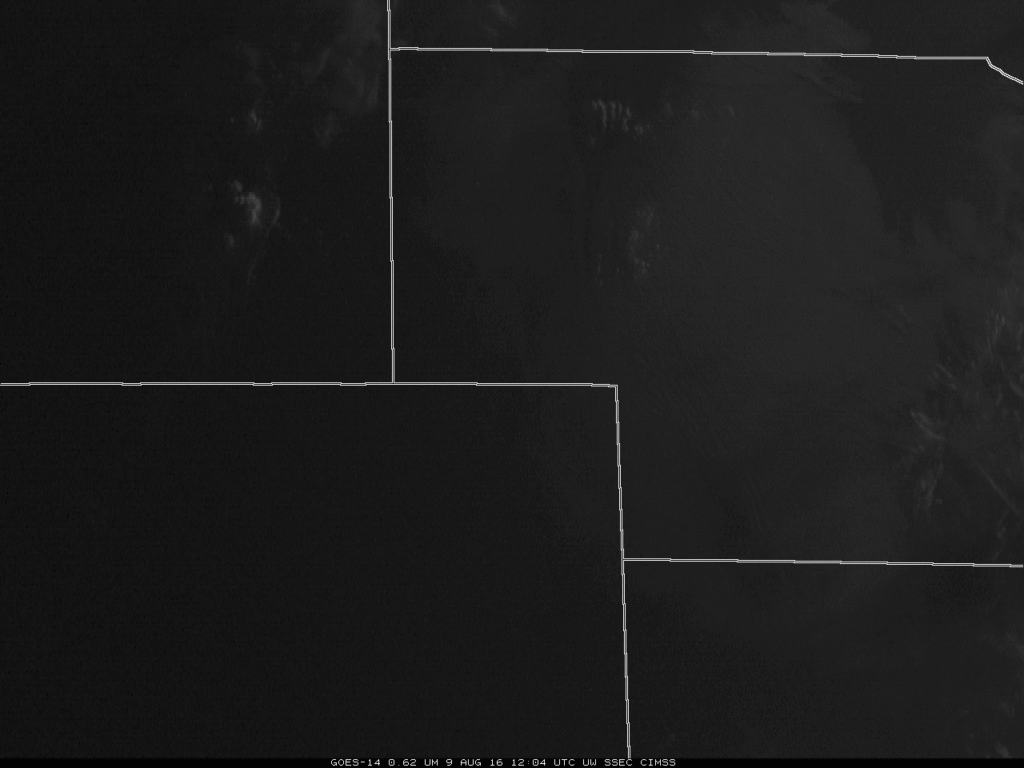
GOES-14 Visible Imagery (0.62 µm) from 1204-1610 UTC [Click to view very large animation]




